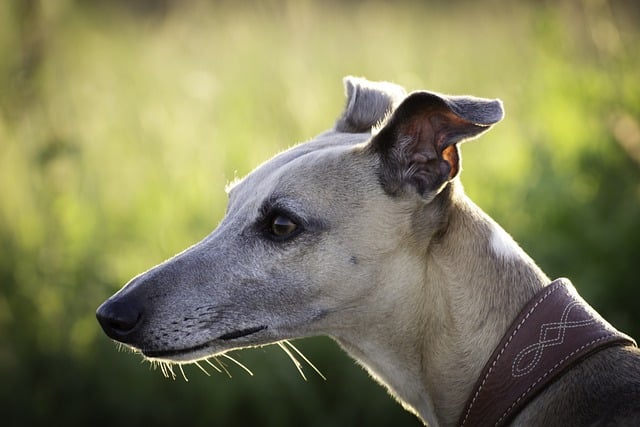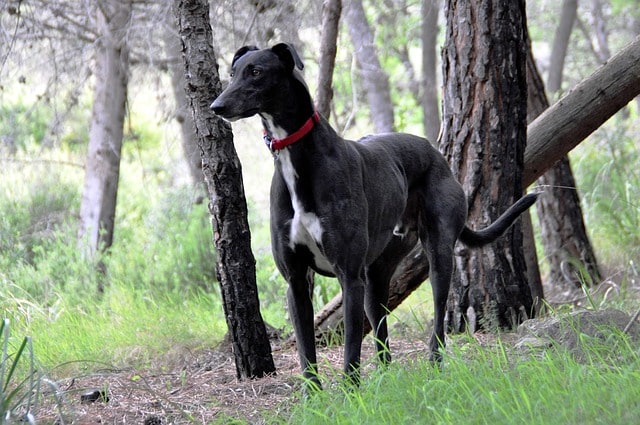Greyhounds, known for their incredible speed and grace, are a beloved breed with a rich history. Despite their popularity, many misconceptions surround these dogs, stemming from their association with racing and their unique appearance. As more Greyhounds transition from racing to life as companion animals, it’s important to clear up common misunderstandings about them. Here, we debunk five of the most persistent myths about Greyhounds.
1. Myth: Greyhounds Need Constant Exercise
One of the most widespread myths about Greyhounds is that they require an enormous amount of exercise. People often assume that because Greyhounds are bred for racing, they must have boundless energy and need to be active all day long. In reality, nothing could be further from the truth.
Fact: Greyhounds are often referred to as “couch potatoes” because of their relaxed nature. While they can sprint at incredible speeds (up to 45 mph!), their bursts of energy are short-lived. Greyhounds are sprinters, not marathon runners, meaning they excel at short bursts of activity followed by long periods of rest. A couple of brisk walks a day and some playtime are enough to keep them content. Many Greyhounds are more than happy to spend the rest of their time lounging on a comfy bed or couch.
If you’re looking for a low-maintenance dog when it comes to exercise, a Greyhound could be the perfect fit. Their calm demeanor makes them excellent companions for apartment dwellers or those who prefer a more laid-back lifestyle.
2. Myth: Greyhounds Can’t Live With Small Animals
Many people believe that Greyhounds are dangerous to have around small animals due to their history of chasing smaller creatures, particularly in the context of racing. This myth stems from their training as race dogs, where they chase mechanical lures.
Fact: While Greyhounds have a prey drive, many of them live harmoniously with small dogs, cats, and other pets. It’s important to remember that every dog is an individual, and their ability to coexist with small animals depends on their upbringing, socialization, and temperament.
Retired racing Greyhounds are often cat-tested by adoption agencies to determine if they can live in a home with smaller animals. Some may indeed have too strong a prey drive, but many can adapt well. The key is proper introduction and supervision in the early stages. With time and training, many Greyhounds can peacefully coexist with smaller animals in the household.
3. Myth: Greyhounds Are Aggressive Because of Their Racing Background
People unfamiliar with Greyhounds sometimes believe that their involvement in racing makes them more aggressive or temperamental than other dogs. This misconception likely comes from the image of a dog that is trained to chase after a lure at high speeds, perhaps being mistaken for a more aggressive type of energy.
Fact: Greyhounds are among the gentlest and most affectionate dog breeds. Their nature is typically calm, gentle, and sociable. Racing Greyhounds have often spent time around other dogs and people, which makes them quite well-socialized by the time they’re ready for adoption.
Many Greyhounds are known to be shy or reserved initially, but this is usually due to the adjustment from their previous lifestyle rather than aggression. Once they settle into their new environment, they are incredibly loving, often developing deep bonds with their families. Greyhounds are generally more likely to seek a comfortable place to nap than to display aggressive behavior.
4. Myth: Greyhounds Are Unhealthy Due to Their Thin Appearance
Another common misconception is that Greyhounds are unhealthy because they appear so thin. Their lean, muscular bodies and visible ribcages often lead people to believe they are underfed or malnourished.
Fact: Greyhounds are naturally slender dogs with very little body fat. Their aerodynamic physique is part of what makes them such successful sprinters. It’s normal for a healthy Greyhound to have visible ribs. This lean body type is not a sign of poor health but rather a characteristic of the breed.
While it’s essential to monitor a Greyhound’s diet and ensure they are receiving proper nutrition, their naturally sleek appearance should not be a cause for concern. In fact, an overweight Greyhound is more prone to health issues like joint problems. As long as their weight is appropriate for their build, they are typically in great health.
However, regular vet check-ups are necessary to ensure they’re maintaining a healthy weight and that their sleek frame isn’t a sign of any underlying issues.
5. Myth: Greyhounds Are Only Suitable for Experienced Dog Owners
Some potential adopters shy away from Greyhounds, believing that their unique needs or racing history make them difficult to care for or only suitable for people with significant dog experience.
Fact: Greyhounds are often referred to as “easy keepers” due to their calm, quiet nature and adaptability. While they have certain specific needs, like any breed, Greyhounds are incredibly versatile and can thrive in a variety of living situations.
Because they are so laid-back, Greyhounds are typically well-suited for first-time dog owners. They are easy to train, especially when positive reinforcement is used, and their temperament tends to be patient and affectionate. While adopting a retired racing Greyhound may come with a learning curve (such as getting used to stairs or household noises), they are generally quick learners and adapt well to their new environment.
Greyhounds are also known for being relatively low maintenance in terms of grooming. Their short coats don’t shed excessively, and they don’t have a “doggy odor,” so frequent baths aren’t necessary.
Greyhounds Make Wonderful Companions
Greyhounds are a gentle, loving breed with unique characteristics that set them apart from other dogs. Debunking these myths reveals their true nature as calm, low-maintenance pets who enjoy lounging just as much as running. Whether you’re an experienced dog owner or a first-time adopter, a Greyhound can make a fantastic companion.
With their affectionate temperament, modest exercise needs, and adaptability to various environments, Greyhounds are a perfect match for many different types of homes. If you’ve ever considered adopting a Greyhound but were hesitant due to these common misconceptions, it’s time to put those fears to rest. Greyhounds may just be the perfect blend of grace, loyalty, and companionship you’ve been looking for.


 Toledo, United States.
Toledo, United States.